Understanding Challenges Faced by Vending Products in Modern Retail
In today's fast-evolving retail landscape, vending products are encountering a spectrum of challenges that can hinder their growth and adoption. According to a report by IBISWorld, the U.S. vending machine industry generated approximately $7 billion in revenue in 2022, yet modern consumers are increasingly demanding a more personalized and technologically integrated shopping experience. This shift is prompting vending operators to rethink traditional models and adopt innovations such as cashless payment systems and inventory management through IoT solutions. However, despite these advancements, challenges such as intense competition from e-commerce platforms and changing consumer preferences pose significant obstacles. Understanding these dynamics is crucial for stakeholders looking to capitalize on the vending products market, which continues to evolve in response to digital trends and the top types of vending solutions that appeal to today’s savvy shoppers.

Identifying Key Issues in Vending Product Placement and Accessibility
In the rapidly evolving landscape of modern retail, vending products face significant challenges regarding placement and accessibility. A report by IBISWorld highlights that the vending machine industry has seen annual revenue growth of 2.9% over the past five years, indicating strong demand. However, strategic placement remains crucial; studies show that 70% of purchases are impulse-driven, emphasizing the need for vending machines to be situated in high-traffic areas such as schools, office buildings, and transportation hubs to maximize visibility.
Accessibility also presents hurdles for vending operators. According to the National Automatic Merchandising Association, nearly 35% of consumers cite lack of variety as a barrier to purchasing from vending machines. Additionally, with the rise of digital payment systems, there is an increasing expectation for cashless options. Vending companies that do not adapt to these new consumer preferences risk losing market share. Data suggests that retailers with user-friendly technology in their vending solutions see a 25% increase in transaction volumes, underscoring the importance of staying relevant and accessible to today's shoppers.
The Impact of Consumer Behavior on Vending Machine Sales
The evolution of consumer behavior has significantly impacted vending machine sales in modern retail. According to a report by IBISWorld, the vending machine industry in the U.S. is projected to grow at an annual rate of 3.2% over the next five years, driven primarily by changing consumer preferences. Today's consumers increasingly demand convenience and accessibility, shifting the focus from traditional snack offerings to healthier and more diverse products. A survey conducted by the National Automatic Merchandising Association (NAMA) revealed that 60% of consumers are more likely to purchase from a vending machine that provides fresh and healthy options, highlighting the necessity for operators to adapt their product selections.
Moreover, the rise of technology in consumer interactions has reshaped vending machine designs. The implementation of cashless payment systems has streamlined the purchasing process, aligning with the preferences of the tech-savvy consumer. Statista reported that in 2020, about 78% of consumers prefer to pay using mobile wallets and contactless cards. This shift has prompted vending machine operators to upgrade equipment to include these payment options, thereby increasing sales and enhancing user experience. As vending operators continue to adapt to these evolving consumer behaviors, their ability to offer innovative solutions will be critical in ensuring sustained growth in this competitive market.
Impact of Consumer Behavior on Vending Machine Sales
This chart illustrates the key factors influencing vending machine sales based on consumer behavior. The data indicates that impulse buying and technology use have the most significant impact on sales, highlighting the importance of attracting customers in a modern retail environment.
Technological Innovations Enhancing Vending Machine Efficiency
In recent years, vending machines have undergone a transformative evolution, largely influenced by technological innovations that enhance their efficiency and appeal in modern retail. The integration of smart technology has allowed vending machines to offer a more interactive experience. Touchscreens, mobile payments, and app connectivity not only streamline the purchasing process but also provide valuable data insights to operators. These advancements enable machine owners to tailor their product offerings to meet consumer preferences, ensuring that popular items are always in stock and reducing wastage.
Furthermore, IoT (Internet of Things) has revolutionized inventory management for vending products. With remote monitoring capabilities, operators can track inventory levels in real-time, receiving alerts when restocking is necessary. This capability minimizes downtime and maximizes profitability by ensuring that machines are always stocked with fresh products. Additionally, innovative features such as cashless payment options and user-friendly interfaces can significantly improve customer satisfaction, attracting a wider audience. As technology continues to advance, vending machines are poised to become even more integral to the retail landscape, meeting the demands of a fast-paced consumer environment.
Strategies for Integrating Vending Products into Modern Retail Environments
Incorporating vending products into modern retail environments can present unique challenges, but with the right strategies, businesses can effectively enhance their offerings. First, it’s essential to identify suitable locations within the store. High-traffic areas, such as entrances or near checkout counters, can attract attention and increase impulse purchases.
**Tip:** Conduct foot traffic analysis to determine peak times and areas of high visibility before placing vending machines.
Furthermore, modern consumers are drawn to technology and convenience. Integrating smart vending machines equipped with cashless payment options and interactive displays can enhance the shopping experience. This approach not only caters to the tech-savvy demographic but also fosters a more engaging environment.
**Tip:** Regularly update the product offerings based on consumer trends and preferences to keep the selection fresh and appealing.
Ultimately, creating a seamless connection between vending products and the overall retail experience will not only benefit sales but also create a modern shopping atmosphere that resonates with today’s customers.
Overcoming Supply Chain Challenges for Vending Product Success
In the ever-evolving landscape of modern retail, vending products encounter a myriad of supply chain challenges that can hinder their success. One of the primary issues is the inconsistency of stock availability, which often stems from unreliable suppliers and complex logistics. As vending operators strive to meet consumer demand, the inability to maintain a steady inventory can lead to empty machines and lost sales opportunities, negatively impacting customer satisfaction and brand loyalty.
To overcome these supply chain hurdles, vending businesses must adopt a proactive approach. Implementing advanced inventory management systems can significantly enhance visibility into stock levels and automate reordering processes. Additionally, fostering strong relationships with multiple suppliers can create a more resilient supply chain, allowing operators to adapt swiftly to any disruptions. By leveraging technology and strategic partnerships, vending product distributors can ensure they remain agile and responsive, setting the foundation for sustained growth and success in the competitive retail environment.
Understanding Challenges Faced by Vending Products in Modern Retail - Overcoming Supply Chain Challenges for Vending Product Success
| Challenge | Impact | Solution | Implementation Status |
|---|---|---|---|
| Inventory Management | Stockouts and overstock leading to lost sales | Automated inventory tracking system | In Progress |
| Supplier Reliability | Unpredictable delivery times causing operational delays | Vendor assessment and selection process | Ongoing |
| Product Selection | Low sales due to poor product variety | Market research and consumer feedback integration | Completed |
| Maintenance Issues | Downtime affecting sales | Regular maintenance schedules | Implemented |
| Technological Integration | Inability to leverage data for sales optimizations | Investing in smart vending technology | In Development |
Related Posts
-
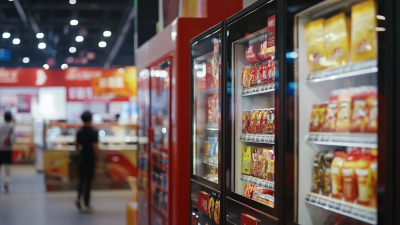
Unlocking Global Opportunities for Vending Products at the 137th Canton Fair in Guangzhou
-
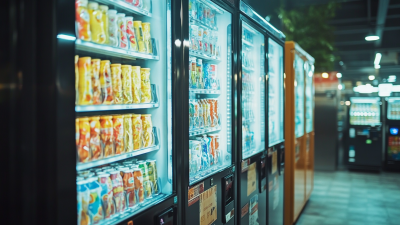
Unlocking Global Market Trends in Vending Products for Savvy Buyers
-

Navigating Tariffs: How China's Best Snack Machine Market Thrives Amidst US-China Trade Tensions
-
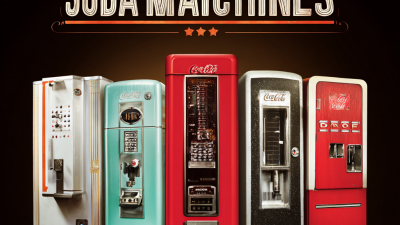
The Ultimate Guide to Choosing the Best Soda Machines for Your Business Needs
-
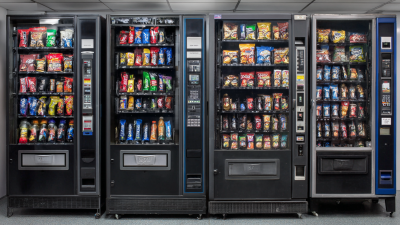
Mastering the Best Vending Solutions A Step by Step Guide to Boosting Your Business
-
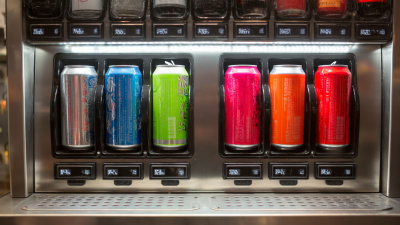
Addressing Key Challenges in Soda Machine Efficiency: Insights and Solutions
